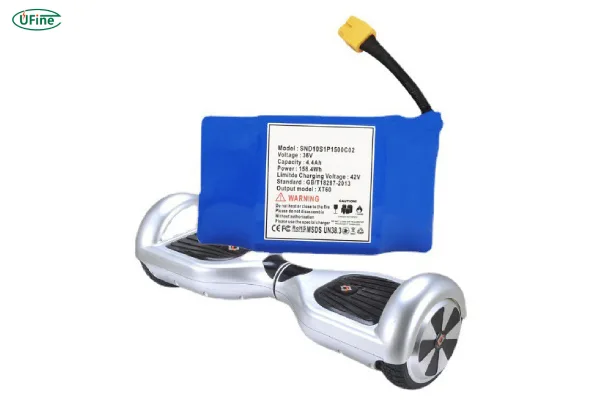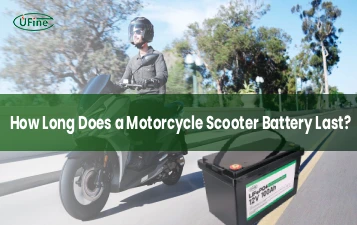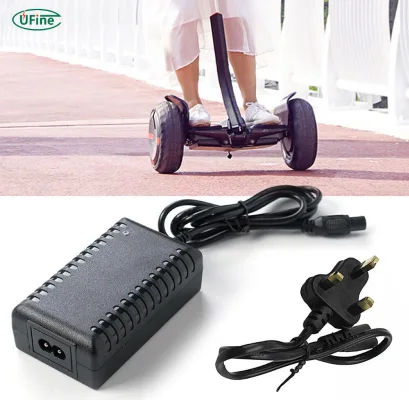
- Part 1. Understanding hoverboard battery basics
- Part 2. Why hoverboard battery life degrades over time
- Part 3. Choosing the right charger
- Part 4. The golden rules of charging a hoverboard
- Part 5. Storage habits that protect battery health
- Part 6. Riding behavior and its impact on battery life
- Part 7. Battery calibration and maintenance routines
- Part 8. Firmware and software updates matter
- Part 9. Environmental awareness: temperature and weather conditions
- Part 10. Avoiding cheap or counterfeit replacement batteries
- Part 11. Knowing when to replace: signs of a dying battery
- Part 12. Ufine Battery: A trusted source for long-lasting hoverboard batteries
- Part 13. Final thoughts
Hoverboards have become increasingly popular for personal transportation and recreational use, but one critical component dictates their performance, range, and lifespan — the battery. Whether you use your hoverboard for commuting or fun, maintaining hoverboard battery life is essential for safety, reliability, and cost-efficiency.
In this article, we’ll explore 12 essential strategies to maximize your hoverboard battery life, avoid premature failure, and keep your ride running smoothly for years to come.
Part 1. Understanding hoverboard battery basics

Before diving into battery care techniques, it’s important to understand what powers your hoverboard. Most hoverboards use lithium-ion or lithium iron phosphate (LiFePO4) batteries, which offer high energy density and rechargeability.
Typical hoverboard batteries range from 36V to 42V, with a capacity of 2,000mAh to 4,400mAh, and last 300 to 500 charge cycles under standard conditions. However, several factors can shorten this life significantly — poor charging practices, environmental stress, and aggressive riding behavior.
By learning how these batteries work and degrade, users can adopt smart habits that significantly extend hoverboard battery life.
Tips for Selecting and Caring for Your Hoverboard Battery
Part 2. Why hoverboard battery life degrades over time
Battery degradation is a natural process caused by chemical aging inside the cells. Every time you charge and discharge the battery, a small amount of capacity is lost. Several key factors accelerate this process:
- Overcharging and deep discharges create stress on battery cells.
- Cell imbalance occurs when individual cells in the pack charge/discharge unevenly.
- Poor BMS (Battery Management Systems) can fail to protect batteries from voltage extremes.
- Exposure to heat or cold degrades chemical stability and reduces cycle life.
Understanding these risks enables users to take preemptive steps to avoid irreversible battery damage.
Part 3. Choosing the right charger
Many hoverboard users overlook the importance of using the correct charger. A mismatched charger can lead to overheating, slow degradation, or sudden battery failure.
Tips for choosing the right charger:
- Match voltage and amperage precisely (e.g., 42V 2A for a 36V hoverboard).
- Avoid generic chargers with inconsistent output.
- Invest in a smart charger that stops charging at full capacity.
A good-quality charger helps maintain voltage accuracy and prolongs hoverboard battery life by avoiding under- or overcharging.
Part 4. The golden rules of charging a hoverboard
Battery charging habits play a huge role in lifespan. To preserve battery health:
- Don’t charge to 100% unless necessary. Stop at ~80% for regular use.
- Avoid draining to 0%. Recharge when battery reaches 20–30%.
- Never leave your hoverboard plugged in overnight.
- Charge slowly if your charger has speed settings — fast charging shortens life.
Following these best practices will help reduce stress on the battery and ensure longer-lasting performance.
Part 5. Storage habits that protect battery health
Storing your hoverboard improperly can silently degrade the battery even when not in use.
Best storage practices:
- Keep the battery at 40% to 60% charge for long-term storage.
- Store in a cool, dry place (15–25°C is ideal).
- Avoid keeping it plugged in or fully charged for extended periods.
- Check battery charge monthly and top-up if it drops below 30%.
These steps help reduce self-discharge damage and internal resistance build-up.
Part 6. Riding behavior and its impact on battery life
Your riding style directly influences how hard your battery works. Consistent high loads and aggressive use will shorten battery life dramatically.
Battery-friendly riding tips:
- Avoid rapid acceleration and braking.
- Use smooth, steady movements for balance and energy conservation.
- Ride on flat, smooth surfaces when possible.
- Avoid excessive rider weight beyond the hoverboard’s rated limit.
Conservative riding reduces heat buildup in the battery and motor, which in turn improves battery health.
Part 7. Battery calibration and maintenance routines
Even the best batteries need periodic maintenance. Calibration helps align the BMS with actual cell capacity and prevents inaccurate battery level readings.
Battery maintenance tips:
- Perform a full charge-discharge cycle once every 1–2 months.
- If your hoverboard app supports it, run a battery diagnostics check.
- Keep battery contacts clean and moisture-free.
Proper calibration ensures your hoverboard operates efficiently and alerts you early to any battery issues.
Part 8. Firmware and software updates matter
Modern hoverboards come with software that manages motor control, battery usage, and safety systems. Keeping this firmware updated is crucial for battery efficiency.
Why updates help:
- Manufacturers often optimize battery drain and charging algorithms.
- Firmware fixes can resolve bugs that cause battery over-discharge or overheating.
- Apps can show real-time battery health data, voltage levels, and error codes.
Regularly check the hoverboard manufacturer’s website or companion app for updates that improve hoverboard battery life.
Part 9. Environmental awareness: temperature and weather conditions
Hoverboard batteries are sensitive to ambient temperature. Charging or riding in extreme conditions can cause both temporary and permanent capacity loss.
Temperature-related tips:
- Avoid charging in environments below 0°C (32°F) or above 45°C (113°F).
- If riding in the cold, allow the battery to warm up before charging.
- Never leave your hoverboard in direct sunlight or a hot car.
Temperature extremes accelerate chemical reactions in cells, leading to swelling, voltage drop, or irreversible damage.
Part 10. Avoiding cheap or counterfeit replacement batteries
If your battery needs replacement, be extremely cautious when choosing a new one. Many low-cost options cut corners on cell quality and safety protection.
Red flags to avoid:
- No UL/CE certifications.
- Lack of brand information or datasheet.
- Suspiciously low prices or overly high capacity ratings.
Always buy from reputable sources and verify the battery specs match your hoverboard model.
Part 11. Knowing when to replace: signs of a dying battery
No battery lasts forever, and knowing when yours is failing can prevent accidents or permanent hoverboard damage.
Common warning signs:
- Sudden drop from full charge to 0%.
- Noticeable heat while charging or riding.
- Battery swelling or odd smells.
- Hoverboard shuts down randomly or won’t hold charge.
If you observe these symptoms, discontinue use and seek professional replacement to ensure safety.
Part 12. Ufine Battery: A trusted source for long-lasting hoverboard batteries
When it’s time to replace your hoverboard battery, quality matters. Ufine Battery is a trusted custom lithium battery manufacturer in China, offering high-performance solutions for personal mobility devices like hoverboards.
Ufine provides:
- Lithium polymer, LiFePO4, and 18650 cylindrical batteries
- Customizable packs tailored to your voltage, capacity, and shape needs
- High-temperature, ultra-thin, and high-rate batteries ideal for rugged or long-range applications
As a professional OEM/ODM partner, Ufine Battery ensures top-notch quality, safety, and reliability. Contact us to learn more about premium hoverboard battery solutions.
Part 13. Final thoughts
Extending the life of your hoverboard battery is not just about saving money — it’s also about maximizing performance, ensuring safety, and enjoying a reliable ride every time. From smart charging to careful riding habits and temperature control, every detail counts when it comes to battery care.
By implementing the techniques discussed in this guide, you can significantly improve the longevity and reliability of your hoverboard’s battery — and ensure it stays powered for the long haul.
Related Tags:
More Articles

How Long Does a Motorcycle Scooter Battery Last? Lifespan, Factors & Maintenance Tips
Learn how long a motorcycle scooter battery lasts, what affects its life, and how to extend it. Discover expert tip.
Motorcycle Battery Replacement Guide | Step-by-Step Tips
Learn how to replace your motorcycle battery safely. Discover costs, types, tools, and maintenance tips to keep your bike starting strong every time.
Battery State of Charge and Battery State of Health
Battery SoC vs. SoH explained: Learn professional methods to measure charge levels, test health status, and optimize battery performance for longer lifespan.
Difference Between 18650, 26650, and 21700 Batteries
What’s the difference between 18650, 21700, and 26650 batteries? Compare size, capacity, and performance to find the best lithium battery for your device.
LFP Battery Vs. LTO Battery: A Detailed Comparison
Compare LFP (LiFePO4) and LTO (Lithium Titanate) batteries by energy density, lifespan, safety, cost, and uses in EVs, solar storage, and backup power.



